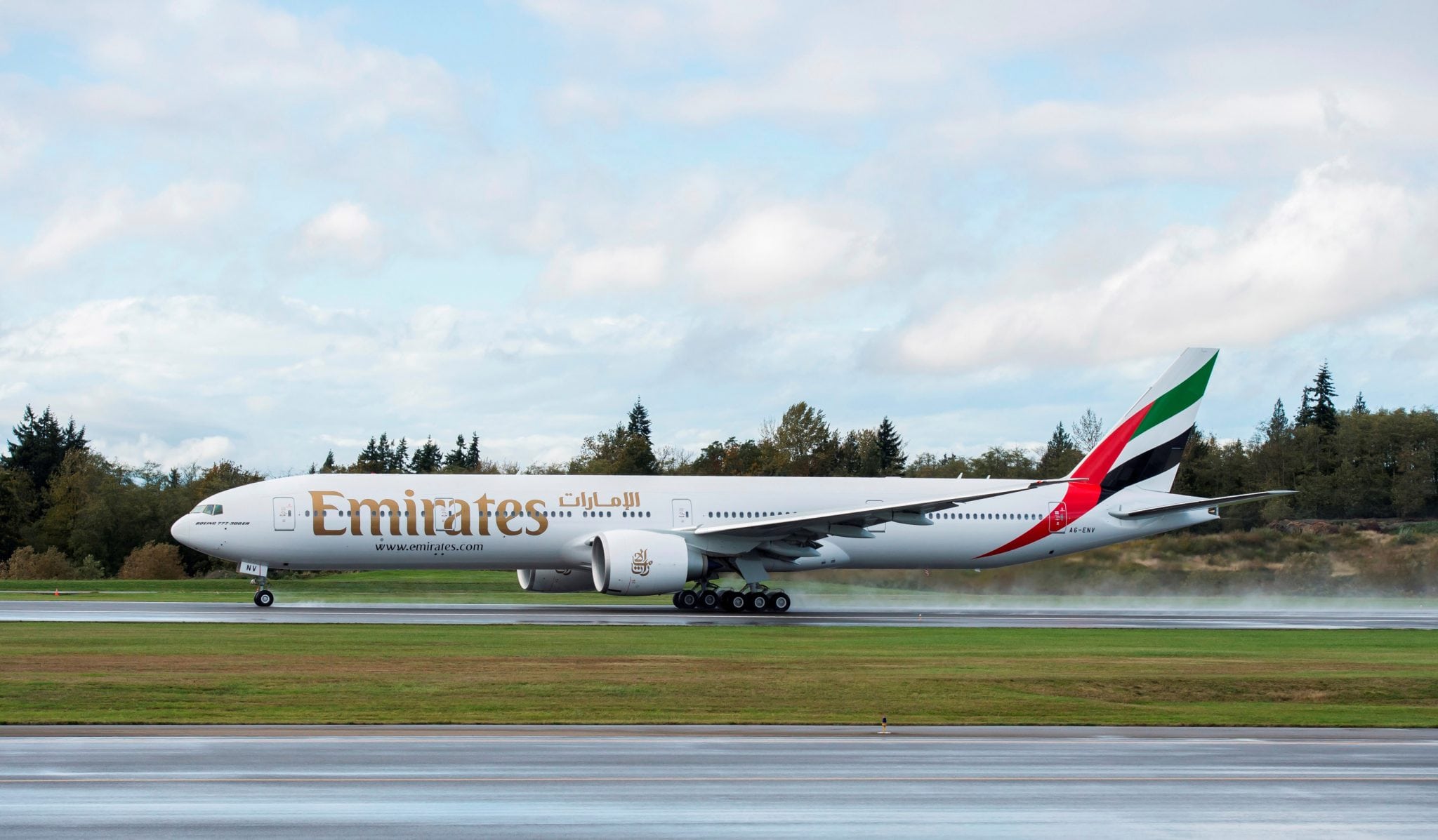
Emirates Boeing 777-300. (Emirates)
Emirates is upgrading its fleet of Boeing 777s with a technology capable of digitally transforming the way the airline’s maintenance team collects and analyzes data about the aircraft’s critical systems and performance: virtual quick-access recorders (vQAR). The Dubai-based carrier has a new contract with United Technologies Corp. subsidiary UTC Aerospace Systems (UTAS) to provide the upgrade.
The upgrade will be applied to 343 total Boeing 777s, including the 147 in operation for Emirates and another 196 that are on order. UTAS describes the vQAR as the latest application that is enabled by its InteliSight aircraft data management platform. The application is hosted on an aircraft interface device (AID), also supplied by UTAS.
AIDs are capable of processing data that is received in real time, enabling event-based reports about critical failures or irregularities in aircraft systems. The vQAR application is hosted on the AID and its function is to record the flight data and aircraft condition-monitoring system (ACMS) reports received by the AID, it then stores the flight data on the AID and prepares it for transmission off the aircraft based on communication rules set by the airline, said Mike Haukom, Engineering Director at UTC Aerospace Systems.
“These communications rules are used to determine when the data is transmitted from the aircraft and how,” Haukom said. “This can be based on the type or size of the data sets and also what type of communication links are available. These communication or business rules (as there are cost implications with different types of communication channels) are set by the customer using tools provided by UTAS.”
On the vQAR, Emirates will be able to create a simple point of contact within a remote terminal to access all of its 777 ACMS messages. Traditionally, this process has been done manually, with a technician removing a portable media device from the aircraft and bringing it to a computer to offload the data to the Emirates server.
The portable media devices were often lost as multiple aircraft would be served during a single duty day by the same person, or the data would be corrupt or missing. This resulted in lost data. This retrieval process would often occur once a week for each aircraft, according to Haukom.
Now, the Emirates flight operations and maintenance teams can monitor and retrieve that same data remotely. A copy of the flight data is retained on the AID as a backup, even after the original data file was transmitted from the aircraft to the Emirates ground server.
“By collecting the flight data on the aircraft and then transmitting it from the aircraft to the ground, the loss of data associated with manual retrieval is reduced significantly and by increasing the frequency of the transmission to after every flight, instead of on a once a week frequency, the data is available much sooner for processing,” said Haukom.
The retrofit for Emirates will include the installation of the AID in the avionics bay on the Boeing 777 aircraft along with wiring for power and access to flight data. Emirates did not respond to inquiries seeking comments on where the airline stands on progress with retrofitting its 777s.